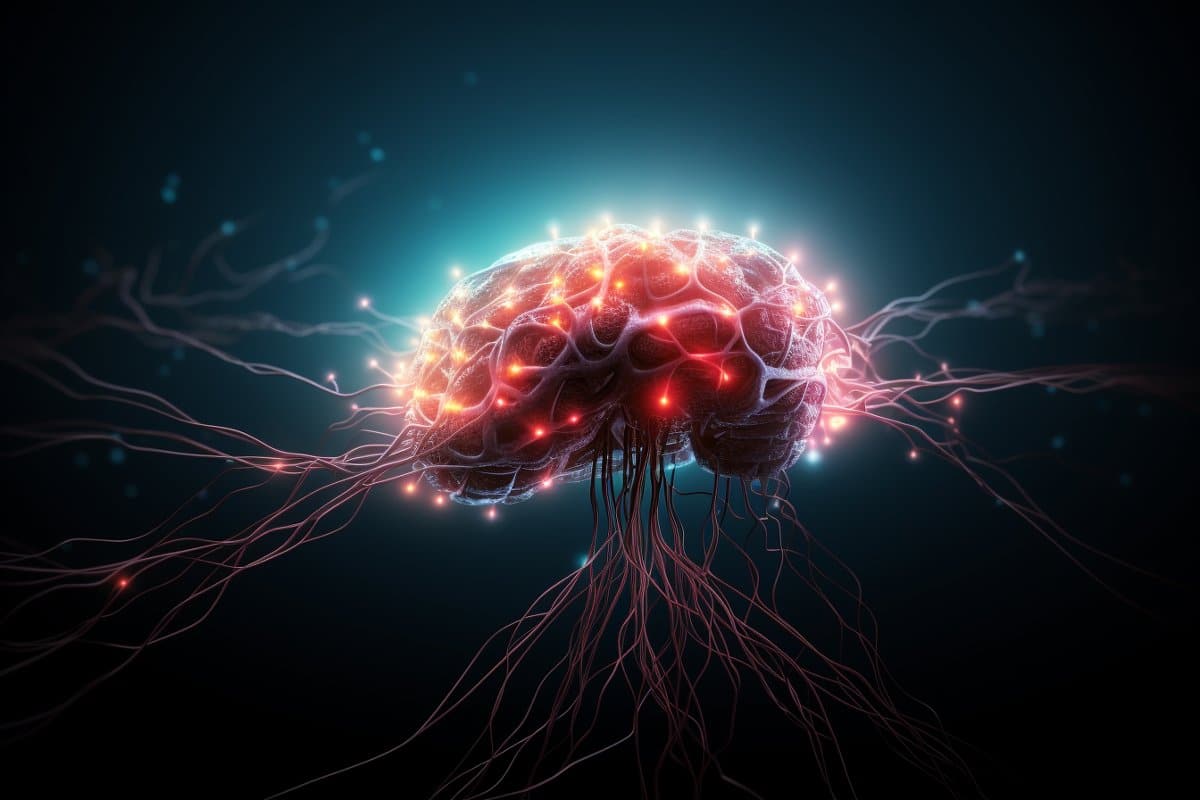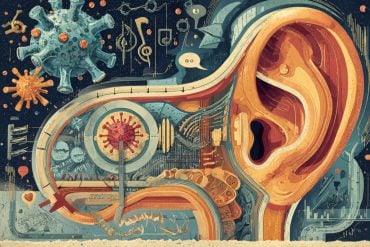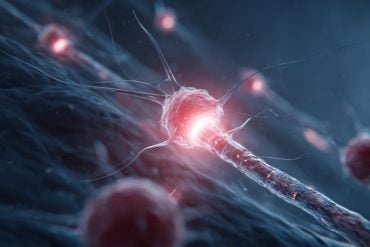Summary: Contrary to popular belief, the brain does not completely rewire itself in response to injury, such as loss of sight or amputation.
Researchers argue that the brain enhances or modifies its pre-existing architecture through learning and repetition rather than repurposing regions for new tasks. While the brain can adapt to changes, it doesn’t create entirely new functions in unrelated areas.
Understanding the true nature of brain plasticity is crucial for setting realistic expectations in patient care and rehabilitation.
Key Facts:
- The study challenges the common notion that the brain can entirely reorganize itself in response to injury or deficits, suggesting that it enhances existing abilities.
- Researchers examined ten seminal studies that purportedly showed the brain’s ability to reorganize and found that it utilizes latent capacities that were present since birth.
- Understanding the limits of brain plasticity is essential for guiding clinical practitioners in rehabilitation and managing patient expectations.
Source: University of Cambridge
Contrary to the commonly-held view, the brain does not have the ability to rewire itself to compensate for the loss of sight, an amputation or stroke, for example, say scientists from the University of Cambridge and Johns Hopkins University.
Writing in eLife, Professors Tamar Makin (Cambridge) and John Krakauer (Johns Hopkins) argue that the notion that the brain, in response to injury or deficit, can reorganise itself and repurpose particular regions for new functions, is fundamentally flawed – despite being commonly cited in scientific textbooks. Instead, they argue that what is occurring is merely the brain being trained to utilise already existing, but latent, abilities.

One of the most common examples given is where a person loses their sight – or is born blind – and the visual cortex, previously specialised in processing vision, is rewired to process sounds, allowing the individual to use a form of ‘echolocation’ to navigate a cluttered room. Another common example is of people who have had a stroke and are initially unable to move their limbs repurposing other areas of the brain to allow them to regain control.
Krakauer, Director of the Center for the Study of Motor Learning and Brain Repair at Johns Hopkins University, said: “The idea that our brain has an amazing ability to rewire and reorganise itself is an appealing one. It gives us hope and fascination, especially when we hear extraordinary stories of blind individuals developing almost superhuman echolocation abilities, for example, or stroke survivors miraculously regaining motor abilities they thought they’d lost.
“This idea goes beyond simple adaptation, or plasticity – it implies a wholesale repurposing of brain regions. But while these stories may well be true, the explanation of what is happening is, in fact, wrong.”
In their article, Makin and Krakauer look at a ten seminal studies that purport to show the brain’s ability to reorganise. They argue, however, that while the studies do indeed show the brain’s ability to adapt to change, it is not creating new functions in previously unrelated areas – instead it’s utilising latent capacities that have been present since birth.
For example, one of the studies – research carried out in the 1980s by Professor Michael Merzenich at University of California, San Francisco – looked at what happens when a hand loses a finger. The hand has a particular representation in the brain, with each finger appearing to map onto a specific brain region.
Remove the forefinger, and the area of the brain previously allocated to this finger is reallocated to processing signals from neighbouring fingers, argued Merzenich – in other words, the brain has rewired itself in response to changes in sensory input.
Not so, says Makin, whose own research provides an alternative explanation.
In a study published in 2022, Makin used a nerve blocker to temporarily mimic the effect of amputation of the forefinger in her subjects. She showed that even before amputation, signals from neighbouring fingers mapped onto the brain region ‘responsible’ for the forefinger – in other words, while this brain region may have been primarily responsible for process signals from the forefinger, it was not exclusively so. All that happens following amputation is that existing signals from the other fingers are ‘dialled up’ in this brain region.
Makin, from the Medical Research Council (MRC) Cognition and Brain Sciences Unit at the University of Cambridge, said: “The brain’s ability to adapt to injury isn’t about commandeering new brain regions for entirely different purposes. These regions don’t start processing entirely new types of information.
“Information about the other fingers was available in the examined brain area even before the amputation, it’s just that in the original studies, the researchers didn’t pay much notice to it because it was weaker than for the finger about to be amputated.”
Another compelling counterexample to the reorganisation argument is seen in a study of congenitally deaf cats, whose auditory cortex – the area of the brain that processes sound – appears to be repurposed to process vision. But when they are fitted with a cochlear implant, this brain region immediately begins processing sound once again, suggesting that the brain had not, in fact, rewired.
Examining other studies, Makin and Krakauer found no compelling evidence that the visual cortex of individuals that were born blind or the uninjured cortex of stroke survivors ever developed a novel functional ability that did not otherwise exist.
Makin and Krakauer do not dismiss the stories of blind people being able to navigate purely based on hearing, or individuals who have experienced a stroke regain their motor functions, for example. They argue instead that rather than completely repurposing regions for new tasks, the brain is enhancing or modifying its pre-existing architecture – and it is doing this through repetition and learning.
Understanding the true nature and limits of brain plasticity is crucial, both for setting realistic expectations for patients and for guiding clinical practitioners in their rehabilitative approaches, they argue.
Makin added: “This learning process is a testament to the brain’s remarkable – but constrained –capacity for plasticity. There are no shortcuts or fast tracks in this journey. The idea of quickly unlocking hidden brain potentials or tapping into vast unused reserves is more wishful thinking than reality.
“It’s a slow, incremental journey, demanding persistent effort and practice. Recognising this helps us appreciate the hard work behind every story of recovery and adapt our strategies accordingly.
“So many times, the brain’s ability to rewire has been described as ‘miraculous’ – but we’re scientists, we don’t believe in magic. These amazing behaviours that we see are rooted in hard work, repetition and training, not the magical reassignment of the brain’s resources.”
About this neuroplasticity research news
Author: Craig Brierley
Source: University of Cambridge
Contact: Craig Brierley – University of Cambridge
Image: The image is credited to Neuroscience News
Original Research: Open access.
“Against Cortical Reorganisation” by Tamar Makin et al. eLife
Abstract
Against Cortical Reorganisation
Neurological insults, such as congenital blindness, deafness, amputation, and stroke, often result in surprising and impressive behavioural changes. Cortical reorganisation, which refers to preserved brain tissue taking on a new functional role, is often invoked to account for these behavioural changes. Here, we revisit many of the classical animal and patient cortical remapping studies that spawned this notion of reorganisation.
We highlight empirical, methodological, and conceptual problems that call this notion into doubt. We argue that appeal to the idea of reorganisation is attributable in part to the way that cortical maps are empirically derived. Specifically, cortical maps are often defined based on oversimplified assumptions of ‘winner-takes-all’, which in turn leads to an erroneous interpretation of what it means when these maps appear to change.
Conceptually, remapping is interpreted as a circuit receiving novel input and processing it in a way unrelated to its original function.
This implies that neurons are either pluripotent enough to change what they are tuned to or that a circuit can change what it computes. Instead of reorganisation, we argue that remapping is more likely to occur due to potentiation of pre-existing architecture that already has the requisite representational and computational capacity pre-injury. This architecture can be facilitated via Hebbian and homeostatic plasticity mechanisms.
Crucially, our revised framework proposes that opportunities for functional change are constrained throughout the lifespan by the underlying structural ‘blueprint’. At no period, including early in development, does the cortex offer structural opportunities for functional pluripotency.
We conclude that reorganisation as a distinct form of cortical plasticity, ubiquitously evoked with words such as ‘take-over’’ and ‘rewiring’, does not exist.






